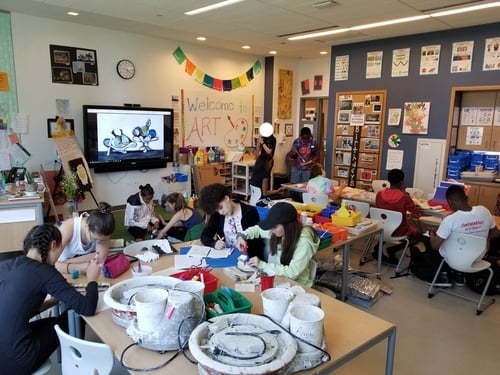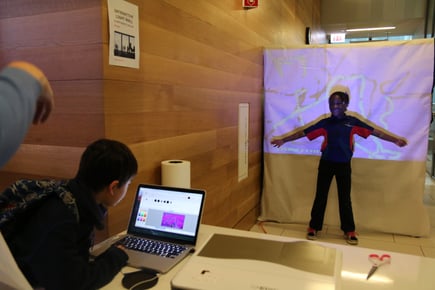THE LINK BETWEEN ART EDUCATION AND CRITICAL THINKING
August 7, 2017 admin Education, GEMS World Academy Chicago, Critical Thinking, Cognitive Development, Private School, Art Education, Empathy
Why study art in school?
The question has asked been repeatedly over the years, often igniting passionate debate. One reason the question comes up is because the outcomes of art education are not easily measured on standardized tests and other assessments — unlike, for example, achievements in math, science and reading.
But research shows that art education builds many of the cognitive skills that are in high demand in the business and professional worlds, skills like critical thinking and creative problem-solving.
At GEMS World Academy Chicago, a leading independent private school, art is both a stand-alone academic subject and a way of thinking that is threaded throughout its International Baccalaureate curriculum. GEMS uses art to help students see the world from multiple angles, and to take a design-thinking approach to solving problems. GEMS also incorporates art into its STEM inquiries (science, technology, engineering and math), creating an integrated program of study often referred to as STEAM.
 Recent research supports GEMS' approach to art education. Noted researcher Eric Jensen, author of the book Arts With the Brain in Mind, studies education-related issues through the lens of neuroscience. He says that the teaching of art results in measurable physical changes in the brain, enhancing a student's attentional skills and his or her ability to make mental connections.
Recent research supports GEMS' approach to art education. Noted researcher Eric Jensen, author of the book Arts With the Brain in Mind, studies education-related issues through the lens of neuroscience. He says that the teaching of art results in measurable physical changes in the brain, enhancing a student's attentional skills and his or her ability to make mental connections.
Jay Greene, a professor of education reform at the University of Arkansas at Fayetteville, has overseen multiple studies of the impact that study of the arts has on students' cognitive and intellectual skills. One of the studies involved a student trip to an art museum, and another involved attendance at a live theater event. In both cases, Greene and his collaborators found that a focused learning experience with art boosts critical-thinking skills, as it encourages students to observe the world more carefully.
Careful, deliberate observation, sometimes referred to as "slow looking," is a central component of Artful Thinking, a recent project led by researchers at Harvard University's Project Zero. Artful Thinking illustrates how and why teachers should make an effort to create connections between art and the larger curriculum. As stated on the Artful Thinking website: "Works of art provoke rich, multilayered meaning-making in ways unlike other disciplines. They raise questions, evoke connection-making, and in many ways transform the shape of inquiry."
 Researchers have also found that arts education can increase empathy in students. Empathy, though not a skill assessed on standardized tests, is at the root of many so-called 21st-century skills, like collaboration, problem-solving and effective communication.
Researchers have also found that arts education can increase empathy in students. Empathy, though not a skill assessed on standardized tests, is at the root of many so-called 21st-century skills, like collaboration, problem-solving and effective communication.
Students at GEMS World Academy Chicago engage with art in a variety of ways. They study existing works in the field by visiting cultural institutions like the Art Institute of Chicago and the Museum of Contemporary Art. They create their own works by drawing, sculpting, coding, taking photographs, painting and more. And they use art in design, humanities and science classes to view concepts in new ways.
GEMS leaders make that commitment to art education because they know an elite private school must do more than simply prepare students to achieve high test scores. Art is part of GEMS' efforts to produce the transformative global leaders of tomorrow.
